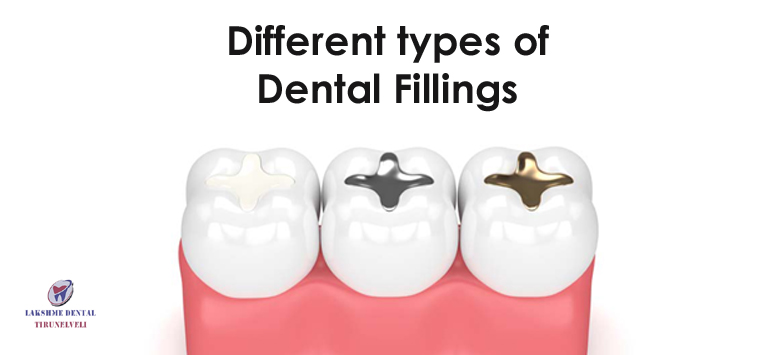
Different types of dental fillings
Dental fillings brought a tremendous change in treating a decayed tooth. Removing the decayed portion of a tooth to clean the bacteria and filling those space with filling material is a common routine in tooth decay treatments. The fillings are also useful in repairing broken teeth and teeth that are worn down due to poor oral habits. You have different materials to restore the teeth from decay and mishaps.
Choosing the filling that suited for you involves a wide variety of things like the location and extent of decay, cost, your insurance coverage and aesthetic preferences. Each has its pros and cons. Knowing them will help you to prefer the right one if you have a chance to choose the desired one.
What are the different types of dental fillings available?
The cavity fillings that are commonly used in dentistry nowadays include Gold fillings, Amalgam fillings, Tooth-colored composite fillings, Porcelain fillings and Glass ionomer.
Not all fillings are applicable for everyone because certain components in the filling materials will have an allergic effect on some people.
1) Amalgam Fillings
It is also known as silver fillings as it is made as a combination of various metallic elements and has been used in dentistry for ages. Because of its durability, dentists use this material to fill spaces in molar teeth with which we chew. The metallic elements present in the amalgam fillings make it noticeable when you smile. Hence it cannot be useful in fixing front teeth.
If you want a strong but least expensive filling material whilst you don’t take about the filling’s visibility, then you can prefer amalgam fillings.
Advantages
- Highly durable and can last for 10 -15 years
- Cost-effective
- Strong enough to withstand your chewing force
Disadvantages
- Easily identifiable
- Creating a room for this filling requires more tooth structure to be removed
2) Tooth-colored composite fillings (or) Resins
It is fabricated with a blend of glass or quartz filler and hence it can be customized to match the tooth color. The composite resins are also hard enough to withstand moderate chewing but it is not an ideal solution for large fillings as it will damage as time passes by. Hence Dentists recommend this filling material for small to mid-sized restorations.
Advantages
- Aesthetic appearance as it is available in different shades to match the tooth color.
- Composite resins require removal of less tooth structure
Disadvantages
- Less durability – It can last up to maximum 5 years only
- It is quite expensive
- Fixing infected or broken tooth with composites mandates frequent dental visits
- Highly susceptible to stains and discolorations
3) Gold Fillings
Gold is another metal filling used next to silver. It possesses all the pros and cons of silver amalgam fillings like durability, restoring the tooth’s structure along with its chewing force, etc. Even though it is easily noticeable and very expensive, people prefer gold fillings because it is more pleasing to the eyes.
Advantages
- It is also durable and can withstand the heavy chewing forces
- Provides aesthetic appearance despite its visibility
Disadvantages
- Very costly
- It stimulates intense pain at times if it is placed adjacent to another metal-filled tooth
4) Porcelain Fillings
The ceramic filling manufactured with porcelain is highly preferred and prescribed because it is aesthetically attractive. The tooth-colored cavity filling substance is also strong enough to get back the infected and broken teeth’s strength. They are also called inlays or onlays and can be utilized to cover the broken front teeth.
Advantages
- It is highly durable and can last more than 15 years
- Stain-resistant
- Highly aesthetic
Disadvantages
- The ceramic cavity fillings require extracting a large number of tooth portions to create space for the fillings.
- Porcelain fillings are highly vulnerable to stains and discolorations.
5) Glass ionomer
The dental filling substance is prepared with the combination of acrylic and glass that exhibits fluoride to strengthen the teeth. It is quite brittle when compared to the cavity fillings we have discussed above and hence it is not widely used The average lifetime of glass ionomers is 5 years. However, the glass ionomers are recommended to treat baby teeth or milk teeth as they are temporary and still in the developing stage.
Bottom line
Dental fillings (or) Tooth fillings help preserve a decayed tooth to restoring the tooth’s infected portions. Moreover, the fillings are also helpful in repairing the teeth damaged due to teeth grinding. Even though the fillings are artificial substances, they also require proper care as well as natural teeth.










